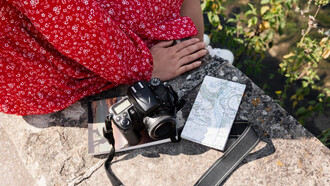Malaysia holds a special place in my heart as the first Asian country I explored, leaving me with unforgettable memories. My journey was made even more special by the warm hospitality of my friend Joshua, who hosted me during my brief three-day stay. Despite being a transit stop en route to Sri Lanka, Malaysia captivated me with its efficient transportation system reminiscent of European countries. The convenience of traveling directly from the airport to the city by train proved ideal for my short visit.
Malaysia’s vibrant mix of cultures and nationalities stood out, particularly during my train ride. I encountered people of Arab, Persian, Turkish, and Kashmiri backgrounds—diversity I had never experienced before. This unique cultural mosaic, paired with warm hospitality, makes Malaysia a truly extraordinary destination.
Historic Malacca
The arrival of the Portuguese in 16th century Malacca marked a transformative period in maritime navigation, profoundly influencing the course of history in the ancient Philippines. As historian William Henry Scott noted, “Perhaps the ‘discovery of the Philippines’ was made in Malacca.” This historic city has many more stories to tell, making it a treasure trove of cultural and historical significance. It is like the river flowing in Malacca, which became a witness to the migration of people there.
Malacca’s rich heritage was recognized globally in 2008 when it was inscribed as a UNESCO World Heritage Site for its vibrant multicultural trading history. In 1509, Magellan joined the first Portuguese fleet to reach Southeast Asia, stopping at this bustling trading hub on the Malay Peninsula. Visiting Malacca today offers a profound connection to the past, especially as this was where Magellan set foot before his fateful voyage to the Philippines.
A journey back in time
Traveling to Malacca by bus from Kuala Lumpur took nearly six hours, but the experience was well worth it. Walking through the old town felt like stepping back in time, even amidst Malaysia’s rapid modernization. Malacca seamlessly preserves its historical charm, contrasting the country’s contemporary advancements.
My visit to Malacca was unforgettable, starting with my visit to the historic St. Paul’s Church, built in 1935. Stepping inside the church, I prayed while listening to the serene voices of women nearby. At the time, the town of Malacca was painted in vibrant shades of pink, adding to its charm.
As I explored further, I discovered numerous Buddhist temples conveniently located close to one another, allowing me to hop from one to the next. Our journey eventually led us to the iconic Dutch Square (Red Square), a vivid reminder of the Dutch influence in the region.
Malacca left a lasting impression with its vibrant colors, artistic murals, and vintage mirrors lining the streets, creating an atmosphere that felt like stepping back in time. As I wandered, I imagined conversing with Magellan, asking him why he set out to discover the Philippines and what was on his mind during his journey. Perhaps we could exchange thoughts and stories over a cup of tea, bridging the past and present in this enchanting town.
A visit to Malacca is not just a journey through history but also a chance to reflect on the enduring legacies of migration, identity, and cultural preservation.
Travel over Kuala Lumpur and beyond
Joshua introduced me to some of his favorite places, starting with Kuala Lumpur, the dynamic capital city. Iconic landmarks like the KL Tower and the Petronas Towers symbolize Malaysia’s modernization and serve as attractions for visitors and business travelers. The bustling urban landscape is complemented by a wealth of shopping and dining opportunities, offering something for everyone.
A skyway adventure in Genting Highlands
A trip to Malaysia wouldn’t be complete without visiting Genting Highlands, especially if you’ve never experienced a skyway ride. This exhilarating 45-minute cable car journey offers stunning views of the surrounding landscapes, including strawberry farms and lush forests. As you ascend, the cool mountain air and breathtaking scenery create an unforgettable experience. Genting Highlands also connects visitors to popular attractions such as Genting Sky Worlds and the iconic Batu Caves, showcasing Malaysia’s remarkable natural beauty and modern infrastructure blend.
A visit to the iconic Batu Caves
Batu Caves, a 100-year-old limestone hill complex in Gombak, Selangor, is a significant religious site for Hindus. The complex has several caves containing Hindu shrines, statues, and paintings. Among its notable features is a 43-meter statue of Lord Murugan, one of the largest of its kind in the world. The site also serves as the focal point for the Tamil Hindu festival of Thaipusam in Malaysia. Climbing the steps to explore the caves is both a spiritual and cultural journey, offering visitors a glimpse into Malaysia’s rich religious heritage. The feeling inside the temple is undoubtedly inexplicable.
A culinary feast
No trip to Malaysia is complete without indulging in its diverse culinary scene. The city’s vibrant streets are filled with an array of unique products and diverse people. It is very evident in the Jonker Street night marker. From vibrant street food to intricate traditional dishes, the flavors of Malaysia linger long after the journey ends, offering a sensory experience that perfectly complements the country’s cultural and natural attractions.
A reflection on migration
We visited the Kashmir Boutique and Café, owned by Zaffer, a Kashmiri man who settled in Malaysia due to conflict in his homeland. Despite living in Malacca since childhood, Zaffer and his family still lack Malaysian citizenship. This situation highlights the complex issues faced by many Kashmiri immigrants in Malaysia—caught between their love for Malacca and the limitations imposed by their stateless status. It raises questions about how many others share Zaffer’s plight, being unable to return to their homeland and entirely belonging in Malaysia due to the lack of proper documentation.
Malaysia’s unique blend of modernity, cultural diversity, and breathtaking natural landscapes ensures it remains a destination that leaves an indelible mark on anyone fortunate enough to visit.















